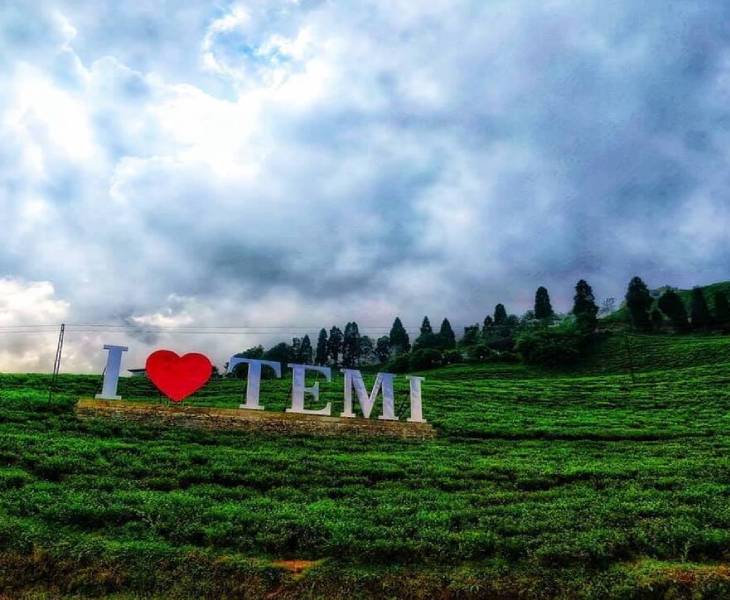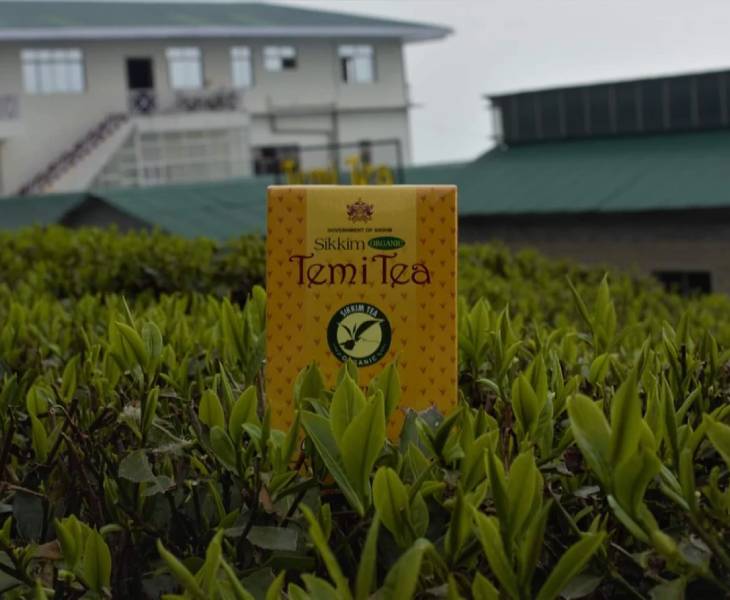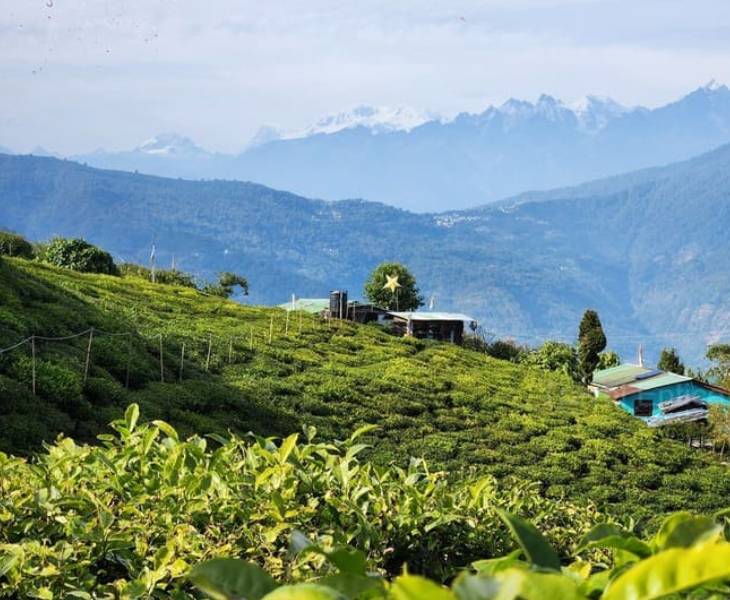Temi Tea produces 1,00,000 kilograms of tea annually and the tantalizing first flush picking that bags the best price in the market is around 25,000 kilograms. Around 75 percent of the produce is sent to the auction center in Kolkata, while 25 percent is packaged for domestic sale. In 1997-98 the Temi Tea state has earned Rs. 86 lakh in revenues. The production from the garden is marketed in four separate categories in order of quality and value. The finest tea comes under the brand name the estate "Temi", in which the basic contents are purely the tea golden flowery orange pekoe #1 (TGOFP1). Next in line is the hugely popular brand, 'Solja'. Third in the order is, 'Sikkim', and then finally dust.

Temi welcomes visitors wanting to take look around it's pristine garden and also allows the more curious to view tea processing inside the factory. Visitors may also choose to spend a night or two at the nearby tourist lodge. Just above the factory, by the side of the road is a small outlet run by the 'Tea Garden Employees Consumers' Co-operative society Ltd'. Which vendors exquisitely packaged tea for visitors to buy. one can find brand names such as First flush, Temi Tea Special, Classic, Green Tea, Black Premium Wooden Box etc. and Dust pouch.
Sikkim is unlike the rest of India. The literacy rate is 98% and poverty under 8%. Electrical power is inexpensive and plentiful. Pesticides are banned throughout the state. Plastic bags were outlawed in 1998. The 610,577 citizens receive free rice from the government to ensure food security and may soon to enjoy universal basic income. In 2016, the entire state of Sikkim was declared organic. Farmers are no longer allowed to use synthetic fertilizer. Interestingly Temi was already certified 100% organic in 2008.

Production has increased since its early days, with current volume at 85-90 metric tons. Srivastava says it’s no longer solely a “gift tea”. “We realized that we were not getting the right price at auction, and Temi tea in its now-familiar yellow packaging disengaged partially in 2017. It’s important for any tea garden to get into the retail market, to establish a brand, to set prices, to experiment, to promote their tea, and to earn better margins.”

Temi was never intended to be a for-profit enterprise but Srivastava has set out to make it a sustainable operation. “We went through a transition period when attrition was high. But we have been working on inculcating professionalism and pride in our workers.” In the last three years, Srivastava has introduced a bamboo unit. Bamboo is native to the northeast and one that can coexist with tea. It offers diversification by providing an opportunity to employ staff who are closer to retirement and can no longer work in tea plucking. It’s also a lucrative unit, bringing in welcome revenue Srivastava talks about the shared productivity concept and about introducing the idea that the workers are not “labor” but contributing to the economy. And more importantly, she talks about how her work in the last three years should take Temi towards profitability, or at least break-even point.